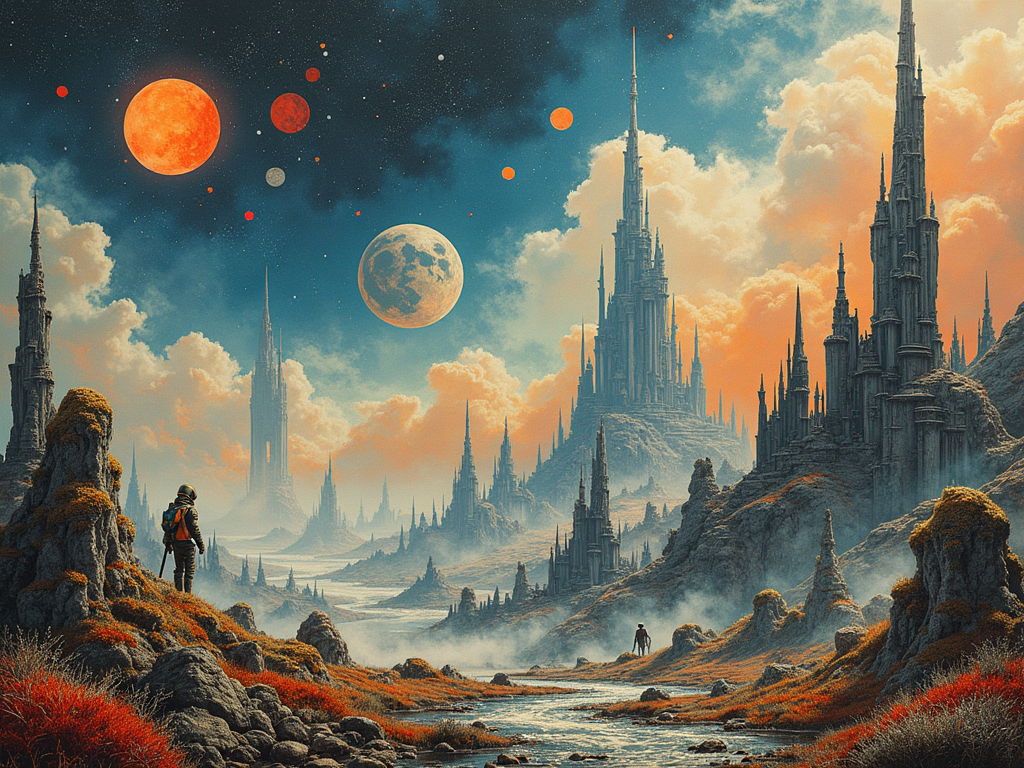Best Noir Novels of the Last Twenty Years: Shadows, Secrets, and Social Commentary
Best Noir Novels of the Last Twenty Years Noir stands apart in the shadowy world of crime fiction with its distinctive blend of moral ambiguity, atmospheric gloom, and flawed characters. Noir fiction has evolved over the past two decades while staying true to its dark roots. This genre continues to captivate readers with its gritty realism and complex narratives. Let’s explore the most outstanding noir novels published since the turn of the millennium, examining how contemporary authors have reimagined and revitalized this timeless genre. The Evolution of Modern Noir Fiction Noir fiction has transformed significantly since its golden age in the 1940s and 50s. However, the past twenty years have seen remarkable innovations within the genre. Today’s noir novels often incorporate broader social commentary, diverse perspectives, and experimental narrative techniques while maintaining the genre’s core elements. Modern noir authors frequently blend the genre with others, creating hybrid works that expand noir’s boundaries. Additionally, contemporary noir increasingly explores settings beyond the traditional urban landscape, bringing darkness to rural communities, suburbs, and international locations. These innovations have breathed new life into noir fiction, making it relevant for today’s readers. Furthermore, technological advancements and social media have created new types of noir stories. Characters now navigate digital shadows alongside physical ones, adding complexity to their moral dilemmas. Top Noir Novels Since 2000 The Cutting Season by Attica Locke (2012) Attica Locke’s “The Cutting Season” masterfully combines historical mystery with contemporary noir elements. Set on a Louisiana plantation-turned-historical site, the novel follows manager Caren Gray as she investigates a murder that connects to her own family’s slave past. Locke’s atmospheric writing creates an oppressive, haunting mood that perfectly complements the noir tradition. Her exploration of racial tensions and historical injustice adds depth to the familiar noir framework. The protagonist’s moral conflicts and the novel’s examination of power structures make it a standout modern noir work. The book’s success demonstrates how noir fiction can effectively address social issues while remaining true to genre conventions. Consequently, Locke has established herself as one of the most important voices in contemporary noir. Bluebird, Bluebird by Attica Locke (2017) Another exceptional entry from Locke, “Bluebird, Bluebird,” follows Texas Ranger Darren Mathews as he investigates racially charged murders in a small East Texas town. The novel exemplifies rural noir, showing how the genre thrives beyond urban settings. Locke crafts a narrative filled with moral complexity, examining how justice operates in communities divided by race and history. The protagonist’s internal struggles mirror the external conflicts, creating layers of tension characteristic of the best noir fiction. Furthermore, the novel’s exploration of institutional racism provides social commentary that gives the story additional relevance and weight. Through her skilled storytelling, Locke proves that noir remains a powerful vehicle for examining society’s darkest aspects. The Whites by Richard Price (writing as Harry Brandt) (2015) Price’s police procedural noir follows detective Billy Graves, haunted by the “Whites” – criminals who escaped justice despite the officers’ certainty of their guilt. This obsession with past failures drives the narrative forward with relentless momentum. The novel excels in portraying the psychological toll that police work takes on its characters. Additionally, Price’s unflinching examination of a flawed justice system places the book firmly in the noir tradition of moral ambiguity. His gritty dialogue and authentic portrayal of New York City establish an immersive atmosphere essential to great noir fiction. Therefore, “The Whites” is one of the decade’s most compelling police noir novels. Noir Fiction Beyond American Borders Tokyo Year Zero by David Peace (2007) Peace transports noir sensibilities to post-WWII Japan in this haunting novel. Detective Minami investigates a series of murders against the backdrop of American occupation and national humiliation. The novel’s fragmented narrative style mirrors the protagonist’s disintegrating psychological state. Peace captures defeated Japan’s chaos and moral uncertainty, creating a noir landscape unlike any other. His experimental prose pushes the boundaries of what noir fiction can accomplish stylistically. Furthermore, the novel’s exploration of historical trauma demonstrates how noir can effectively examine societal wounds. Consequently, “Tokyo Year Zero” represents an important expansion of noir’s geographical and thematic territory. The Devotion of Suspect X by Keigo Higashino (2011) Higashino’s psychological thriller puts a distinctly Japanese spin on noir conventions. The novel centers on a mathematics teacher who helps his neighbor cover up a murder, engaging in an intellectual battle with the detective investigating the case. Unlike traditional noir, the novel reveals the killer immediately, focusing instead on the cat-and-mouse game between characters. This inversion of expectations demonstrates how international authors have refreshed noir formulas. The novel’s exploration of devotion, obsession, and sacrifice adds emotional depth to its intricate plot. As a result, Higashino’s work exemplifies how noir elements can be adapted across cultures while maintaining the genre’s essential darkness. Female Perspectives in Modern Noir Sunburn by Laura Lippman (2018) Lippman’s homage to James M. Cain brings a contemporary feminist perspective to the femme fatale archetype. “Sunburn” follows Polly, a woman with a mysterious past who begins a dangerous affair with a private investigator in a small Delaware town. The novel subverts expectations by giving its female protagonist agency and complexity rather than reducing her to a stereotype. Lippman’s nuanced exploration of gendered power dynamics also refreshes noir’s traditional sexual politics. Her sun-drenched setting contrasts with noir’s typically urban environments while maintaining the genre’s psychological darkness. Therefore, “Sunburn” demonstrates how female authors have revitalized noir by challenging its conventions. Blacktop Wasteland by S.A. Cosby (2020) Cosby’s rural noir follows Bug, an exceptional getaway driver trying to leave his criminal past behind. When financial pressures mount, he takes on one last heist with predictably disastrous consequences. The novel combines high-octane action with profound character development. What sets “Blacktop Wasteland” apart is its exploration of Black masculinity and the economic pressures facing rural communities. Cosby’s unflinching portrayal of systemic inequalities adds social commentary, enhancing the noir elements. His vivid prose creates an immersive atmosphere of desperation and limited choices. Consequently, the novel is one of the most exciting recent contributions to the









